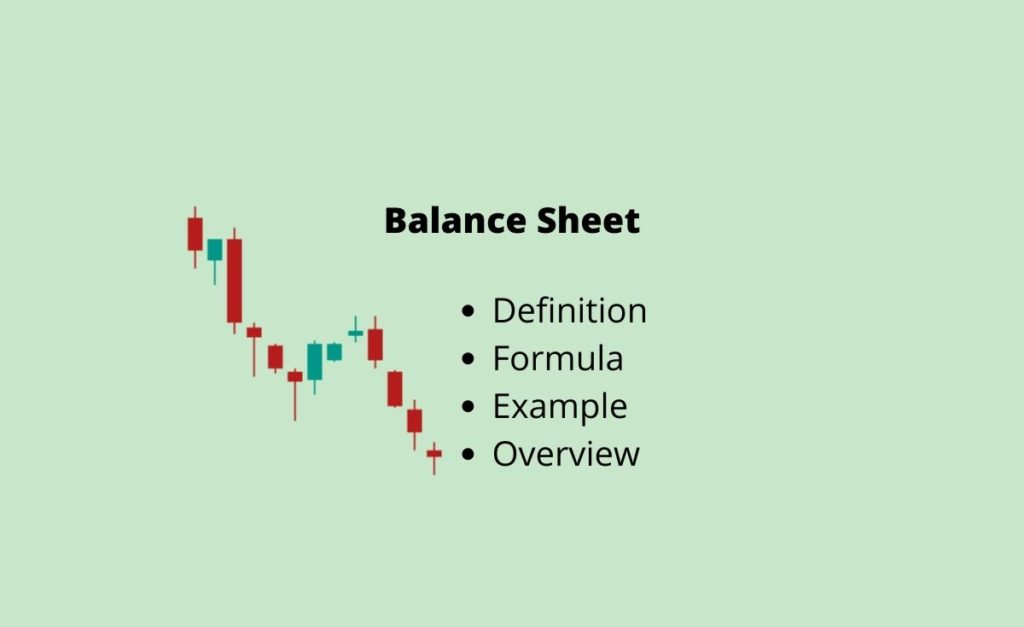What is balance sheet?
The balance sheet is a financial statement that reports the company’s assets, liabilities, and shareholders’ equity [credit: Accounting Tools]. There are three other financial statements that businesses prepare which are the income statement, cash flow statements, and statements of shareholder’s equity.
Since the balance sheet shows assets, liabilities, and shareholder’s equity; investors use it to assess the liquidity of a business.
The balance sheet equation
Three variables (Assets, Liabilities, and Shareholder’s Equity) are used in the balance sheet equation.
Assets = Liabilities + Shareholder’s Equity
For example, if a company reported a total of $150,000 in total assets and $60,000 in total liabilities, its shareholder’s equity will be $90,000 ($150,000 – $60,000).
What is reported on the balance sheet?
The balance sheets covers three major parts which are: (1) Assets, (2), Liabilities, and (3) Shareholders’ equity
1. Assets
Assets represent anything a business or a person owns that can be turned into cash or generate profit for the owner. Companies use assets to run daily operations, expand their businesses, generate profits, and cover debts. Having a good number of assets is a sign of stability and a strong outlook(as long as the business did not take on huge debt to acquire those assets).
Businesses assets are grouped into the following categories.
- Cash: The total amount of liquid cash available
- Accounts receivable: Accounts receivable is the total amount a business must be paid by its clients. That is the business provided services to clients who did not make payment at the time of the sale. Usually, clients make their payments in a short time like a month, or based on the contracts that bind them with service providers.
- Marketable securities: Marketable securities are types of assets that can be converted into cash fast. A good example of marketable securities can stock and bonds. These assets can be liquidated in a matter of minutes.
- Prepaid expenses: Prepaid expenses are cover the money a company spent on goods and services paid in advance. That is the payment was made before goods or services are ready to be consumed.
- Inventory: Inventory represents all goods or merchandise that are not sold yet. Businesses sell their inventories to recover their funds for profits or losses, continue their operations, and finance other investments.
- Fixed assets: Fixed assets are assets that cannot be converted into cash very easily. These assets include plants, equipment, and other tangible properties.

2. Liabilities
In short, liabilities refer to the money a person or a business owes other businesses. For example, if a business took goods from a supplier without paying, the transaction will be recorded on the balance sheet as a liability. Another good example of liability will be an unpaid loan.
The following are some of the liabilities that will be reported on the balance sheet.
- Accounts payable: Accounts payable are the money that a company owes other businesses(suppliers) for unpaid goods or services.
- Short-term debt: Short-term debt is debt that is expected to be paid within a year. These financial obligations are usually classified as current liabilities.
- Long-term debt: These are debts that have a maturity date of more than one year. These debts are also known as long term liabilities.
- Accrued liabilities: These are transactions that have been made but the company has not received invoices in order to make the payment. In other words, these are expenses that are to be covered at any time soon.
- Taxes payable: Taxes payable are taxes that a business owes to the federal government, state or other entities.
There are many ways companies can finance their operations. For example, a profitable company can finance most of its operations using profits from its sales.
However, if the business does not have enough money to finance its operations, it will rely on other financing methods. That is the business will get a loan or raise money through an initial public offering (IPO) or a secondary offering (for the publicly-traded companies). This will increase the company’s debt and hinder its profitability.
When investors want to know how a company is funded, they use the shareholder’s equity. The shareholder’s equity is the difference between total assets and total liabilities. High equity shows that the business does not rely on debt to fund its operations.









